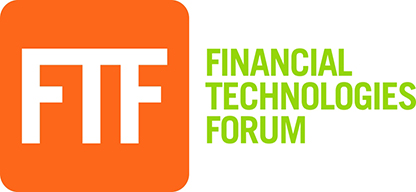Robust reporting can not only serve clients’ needs but can be a competitive advantage for asset owners and managers, says a new report.

Grygo is the chief content officer for FTF & FTF News.
Client and regulatory reporting responsibilities for asset managers and asset owners have always been essential operations that, by definition, have to be without flaws, are basic requirements, and are focused on clients’ needs.
A new report from provider FactSet, “At the End of It: A Buy-Side Playbook for Reporting Success,” is making the case that robust reporting — at a level beyond conventional efforts — can also serve the needs of the asset management firm and asset owner by becoming a competitive advantage. The report, based on new research, focuses on the current state of reporting among asset managers and asset owners looking for a path to robust reporting.
The research was “carried out for FactSet by Coleman Parkes during September and October 2024,” according to the report’s authors. “Researchers spoke to 325 respondents: 125 from Europe, Middle East, and Africa regions; 125 from North America; and 75 from the Asia Pacific region. All respondents were decision makers for reporting at institutional asset management and asset owner companies.”
Some of the top findings from the respondents are:
- 62 percent say high-quality reporting has become a competitive differentiator because it “helps win new business, boost brand reputation, and improve client satisfaction;”
- 70 percent of respondents find that customized reports are challenging, even if they can be “a crucial value driver” that can have significant impacts upon a firm’s success in various areas; and
- More than three-quarters of respondents see “vital benefits for regulatory compliance (78 percent), risk management (76 percent), innovation (73 percent), and customer satisfaction (65 percent).”
Basically, the research finds that getting to robust reporting is easier said than done. But it’s not impossible.
“Asset management firms are under growing pressure to deliver high-quality, detailed, and timely data. Clients and regulators now also demand comprehensive insights into areas such as investment exposure, risk management, and performance attribution — making robust reporting a critical priority,” according to the report. “However, outdated legacy systems are slowing progress. Many firms operate with antiquated processes designed for an era of printed reports, which makes adapting to today’s digital demands challenging. Reporting teams often lack the resources needed to modernize systems and enhance service quality, leaving organizations struggling to meet expectations.”
The bottom line is that asset managers and owners cannot simply rely on existing systems that “may cover basic needs” because there is a major push underway for better efficiency, quality, and integration, according to the report.
Change may be coming. The report reveals that “many asset managers and owners are disappointed with their current capabilities: just 12 percent believe what they currently deliver meets all the needs and demands of clients, while 36 percent worry their reporting capabilities are currently only average or even poor. Smaller organizations are particularly likely to be concerned,” according to the research. “This report therefore identifies areas for improvement, with actionable steps for organizations looking to make meaningful progress — including better data, a focus on personalized design in reporting, and distribution improvements enabled by enhanced efficiency.”
At the heart of the problem is the seemingly elusive goal of optimal data management.
“The primary hurdles in data integration for reporting stem from disparate data sources and ongoing issues with data quality and consistency. By prioritizing data unification and ensuring data integrity, organizations can significantly improve reporting capabilities and better meet the demand for tailored client solutions,” according to the report.
Another problem is growing pains.
“It is also critical to plan for an evolution of this infrastructure as the organization scales. Larger organizations appear to face more problems in areas such as disparate data sources, data quality, legacy systems, and technical expertise,” the report notes. “On the other hand, issues such as lack of standardization tend to improve as asset managers and owners scale. These organizations deal with higher volumes and complexity of data, requiring more sophisticated integration solutions, while also benefiting from better budget resources.”
To help firms catch up, the report urges five strategies:
- Build a strong investment case: “Understand your clients’ needs and identify how your organization can deliver value to meet and exceed their expectations;
- Strengthen your data infrastructure: “Ensure datasets are consistent, accurate, and well managed, while improving analytics capabilities to strengthen reporting and audit processes;”
- Personalize the client experience: “Leverage digital reporting tools to provide tailored solutions and empower clients with self-service options for greater flexibility;”
- Drive efficiency and productivity: “Streamline workflows and adopt automation to upgrade reporting processes and elevate service delivery;”
- Refine your operating model: “Determine what tasks to outsource versus manage in-house, and develop a clear vendor strategy to support scalable, future-ready technology.”
The full report can be found here: https://shorturl.at/KIo2V
Need a Reprint?